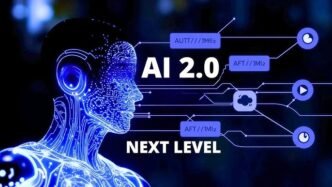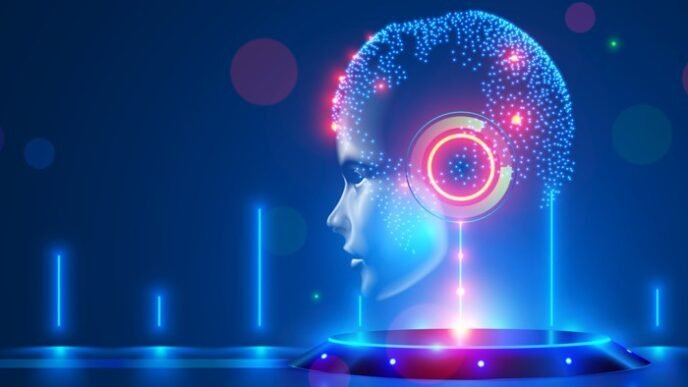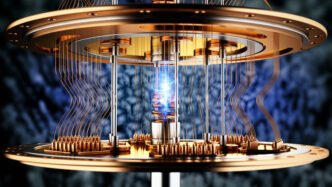A new model mimicking large language models is set to transform how robots learn and adapt
The field of robotics is on the cusp of a significant breakthrough, thanks to innovative research from the Massachusetts Institute of Technology (MIT). Researchers have developed a novel model for training robots (HPT) that leverages vast amounts of data, akin to the datasets used in training large language models (LLMs) like GPT-4. This groundbreaking approach addresses the limitations of traditional imitation learning and paves the way for the development of a universal robot brain that could revolutionize automation across industries.
The Limitations of Traditional Imitation Learning
Challenges in Dynamic Environments
Imitation learning, where robots learn tasks by mimicking human actions, has been a cornerstone of robotic training. However, this method often falls short when robots encounter variations in real-world environments. Minor changes such as different lighting conditions, new obstacles, or altered settings can significantly impede a robot’s ability to perform tasks accurately.
Data Scarcity and Adaptability
The crux of the problem lies in data scarcity. Traditional models rely on limited, focused datasets, which do not provide the breadth of experience needed for robots to adapt to unforeseen circumstances. Without extensive data to reference, robots trained through imitation learning struggle to generalize their skills beyond the specific scenarios they were taught.
Introducing Heterogeneous Pretrained Transformers (HPT)
Drawing Inspiration from Large Language Models
MIT’s research team sought inspiration from the success of large language models like GPT-4, which utilize massive datasets to perform a wide array of language tasks. By adopting a similar approach for robotics, the team aimed to enhance robots’ adaptability and problem-solving capabilities.
The HPT Architecture
Lirui Wang, the lead author of the study, emphasized the need for a different architecture to handle the diversity of data in robotics. The result was the development of Heterogeneous Pretrained Transformers (HPT). This architecture integrates information from various sensors and environments, allowing robots to process and learn from a multitude of experiences.
How HPT Works
• Data Integration: HPT collects heterogeneous data from multiple sources, including visual inputs, tactile sensors, and environmental readings.
• Transformer Utilization: By employing transformers—a type of model architecture known for handling sequential data—the system can effectively combine and interpret the diverse information.
• Scalability: The performance of HPT improves with the size of the transformer model. Larger models can process more data, leading to better learning outcomes.
The Path to a Universal Robot Brain
User-Friendly Implementation
One of the most exciting aspects of this development is the user interface. Users simply input the robot’s design, configuration, and the task they want the robot to perform. The HPT model then utilizes its extensive training to execute the job without the need for additional programming or training.
Vision for the Future
David Held, an associate professor at Carnegie Mellon University (CMU), expressed optimism about the potential impact of this research. He stated:
“Our dream is to have a universal robot brain that you could download and use for your robot without any training at all. While we are just in the early stages, we are going to keep pushing hard and hope scaling leads to a breakthrough in robotic policies, like it did with large language models.”
Implications for the Robotics Industry
Enhanced Adaptability
The introduction of HPT means robots can become significantly more adaptable. They will be better equipped to handle variations in their environment, making them more reliable and efficient in real-world applications.
Reduction in Training Time and Costs
A universal robot brain reduces the need for extensive task-specific training. This can lead to significant cost savings and faster deployment of robotic solutions across various industries.
Potential Applications
• Manufacturing: Robots can adapt to different products and assembly processes without reprogramming.
• Healthcare: Assistive robots can better understand and respond to the needs of different patients.
• Service Industry: Robots can navigate and operate in diverse settings like restaurants or hotels with minimal adjustments.
Overcoming the Data Challenge
Leveraging Big Data
The success of HPT hinges on the availability of large, diverse datasets. By collecting vast amounts of data from different sources and scenarios, robots can learn a wide range of behaviors and responses.
Collaborative Data Gathering
Collaboration between institutions, industries, and countries could accelerate data accumulation. Shared datasets can enrich the learning models, benefiting all participants in the robotics field.
The Role of Transformers in Robotics
Understanding Transformers
Transformers are a type of neural network architecture that excel at handling sequential data and capturing long-range dependencies in information. Initially developed for natural language processing, their application in robotics is a novel and promising development.
Benefits in Robotics
• Multimodal Data Processing: Transformers can handle various data types simultaneously, crucial for robots that rely on multiple sensors.
• Improved Learning Efficiency: They can generalize learning from one task to another, enhancing the robot’s ability to adapt.
Challenges and Considerations
Computational Resources
Training large transformer models requires significant computational power. Ensuring that this approach is accessible will involve addressing hardware limitations and optimizing algorithms for efficiency.
Ethical and Safety Concerns
As robots become more autonomous, it’s essential to consider the ethical implications and ensure that safety protocols are integrated into their operation.
Need for Standardization
Developing a universal robot brain will require standardizing hardware and software interfaces across different robotic platforms.
Conclusion
MIT’s development of Heterogeneous Pretrained Transformers marks a significant milestone in robotics. By adopting strategies from large language models, researchers are opening doors to more adaptable, efficient, and user-friendly robots. The vision of a universal robot brain is no longer a distant dream but an emerging reality that could transform industries and everyday life.
As the research progresses, collaboration and innovation will be key to overcoming challenges and fully realizing the potential of this groundbreaking approach.













